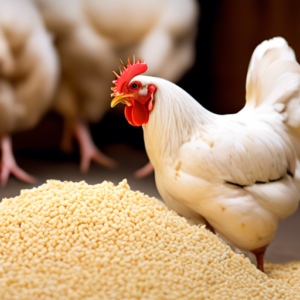Reducing feed costs in poultry farming projects

Dr. Hoger Omar
Poultry breeding and health specialist
28/7/2024
In a previous article, I wrote about how to reduce the cost of broiler chickens, in this article I will complete that post and I will talk about my personal experience in reducing the cost of laying hens, I will talk about my personal experience and the products that I personally used and certainly there are products or personal experiences that may be better, but I am talking about my personal experience only.
In addition to all the materials that I mentioned previously in the post, about broiler chickens, which are very similar to laying hens and mothers, for example, one of the products for improving energy, I used it at a dose of 250 g/ton of feed. I reduced the amount of oil by 3 liters for 3 days and then reduced another 6 liters and continued with this method (adding 250 g and reducing 6 liters of oil) but in two stages and the price difference was very reasonable.
The second method is a feed product called (Mix Oil) and it is Italian made, I added it to the feed at a quantity of 100 g/ton, and reduced the amount of feed by 10 g/bird for 4 days. Then I added 100g again, meaning a total of 200g per ton, and I reduced the total amount by 20g/bird, without affecting the production performance or health of the birds. This method was recommended by the producing company at a conference, and one of the attendees, a Jordanian agricultural engineer and supervisor of one of the hatching egg for mothers projects in Jordan, had his say. He said that he reduced it to 25g/rooster, and on the contrary, it increased the production efficiency and the percentage of insemination and hatching in the project.

Some tips regarding reducing the cost of feed:
- Use energy enhancers and reduce the amount of added oil or fat such as Lysofort, Artifer and Lazy Max.
- When using the NPS enzyme, it must be added in a matrix form, meaning knowing the amount of energy it provides and reducing the energy source in the feed based on the efficiency of the enzyme.
- Use the protease enzyme. Protease, and one of the best of these enzymes is the Sabineza enzyme from Novus, which can be used to reduce the percentage of crude protein in the feed by 10%. Although I only recommend 5% to ensure results. For example, the protein percentage of the starter feed can be reduced from 23% to 21.8%, thus reducing the cost of feed.
- In breeding and production projects that manufacture their own feed, I strongly recommend using the (Amino acid profile) method, which means providing the amino acids that the bird needs regardless of the protein percentage, while controlling the CPR percentage. I do not recommend applying this method to feed factories that sell feed to breeders so that the product is not challenged and it is said that the supposed crude protein percentage is 23%, but in the examination it is only 21%, and they forget that the feed factory applies the (Amino acid profile) technology that is widespread worldwide, which guarantees higher results with lower feed costs.
- Use some products designed to reduce the cost of feed such as Hemicell from Elanco, which contains the enzyme B mannanase, which breaks down mannan and provides energy. It is also possible to reduce the cost of feed by reducing energy and thus reducing the cost of feed.
- It is not preferable to use (urea), regardless of its percentage in the feed, in order to increase the percentage of crude protein in the feed because the method of testing protein in the feed is (Keldahl or Micro-Keldahl), which depends on calculating the percentage of nitrogen in the sample and multiplying the result by (6.25) and the result is the percentage of crude protein in the sample. Adding urea will give an unreal percentage, in addition to its very bad effect on the liver and kidney and thus a bad effect on the health of the birds.



